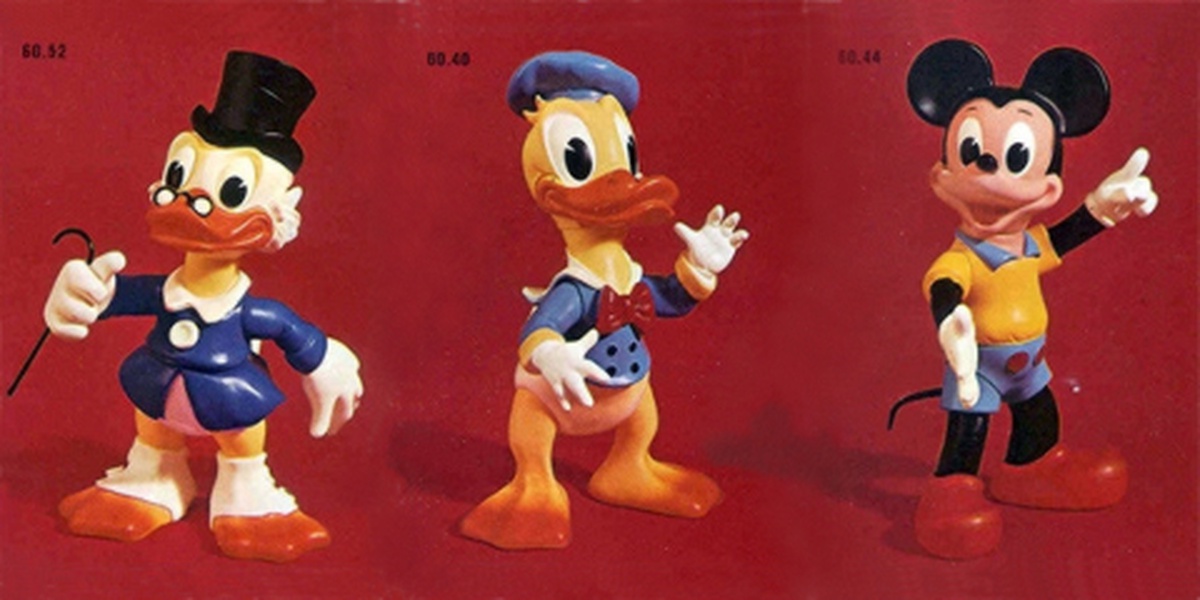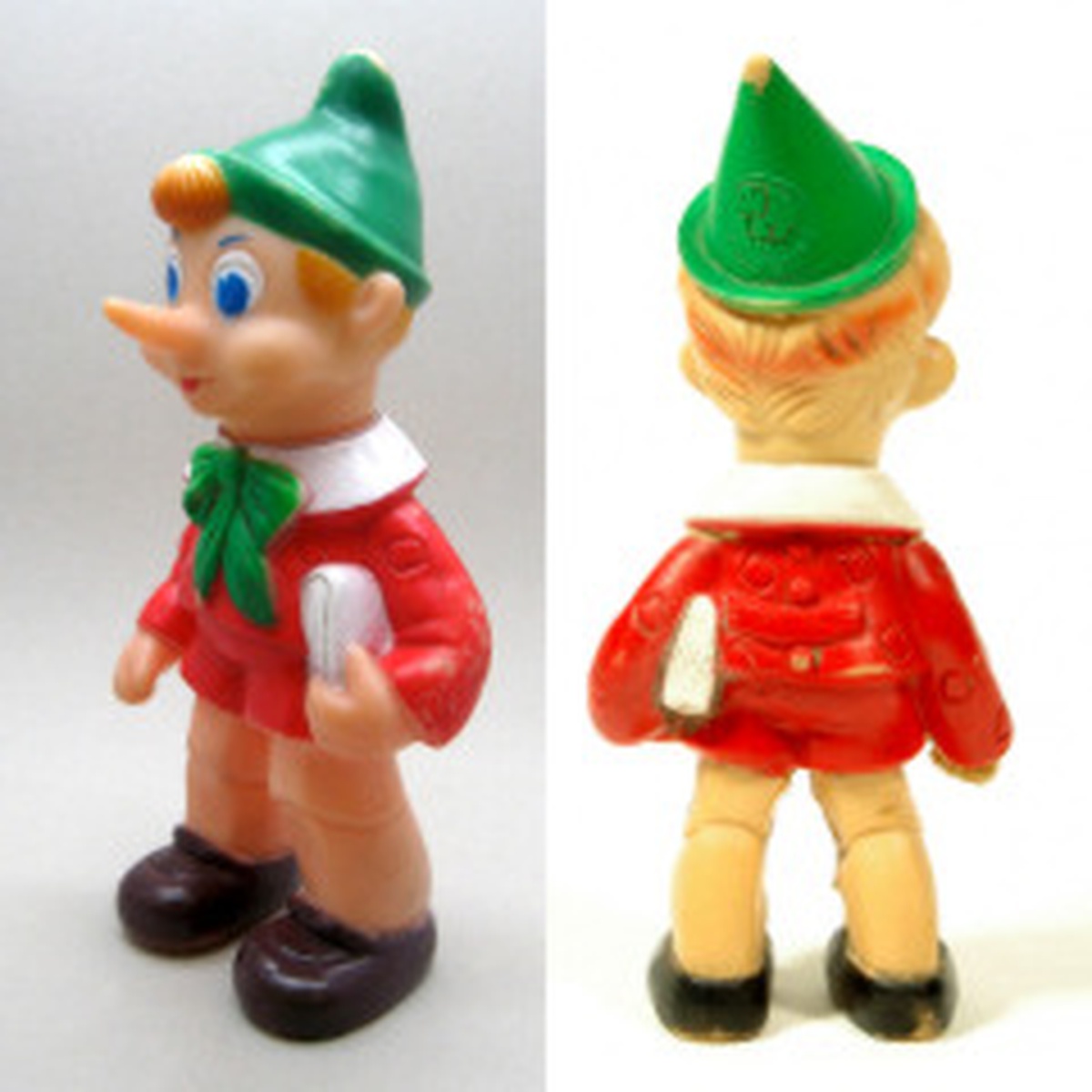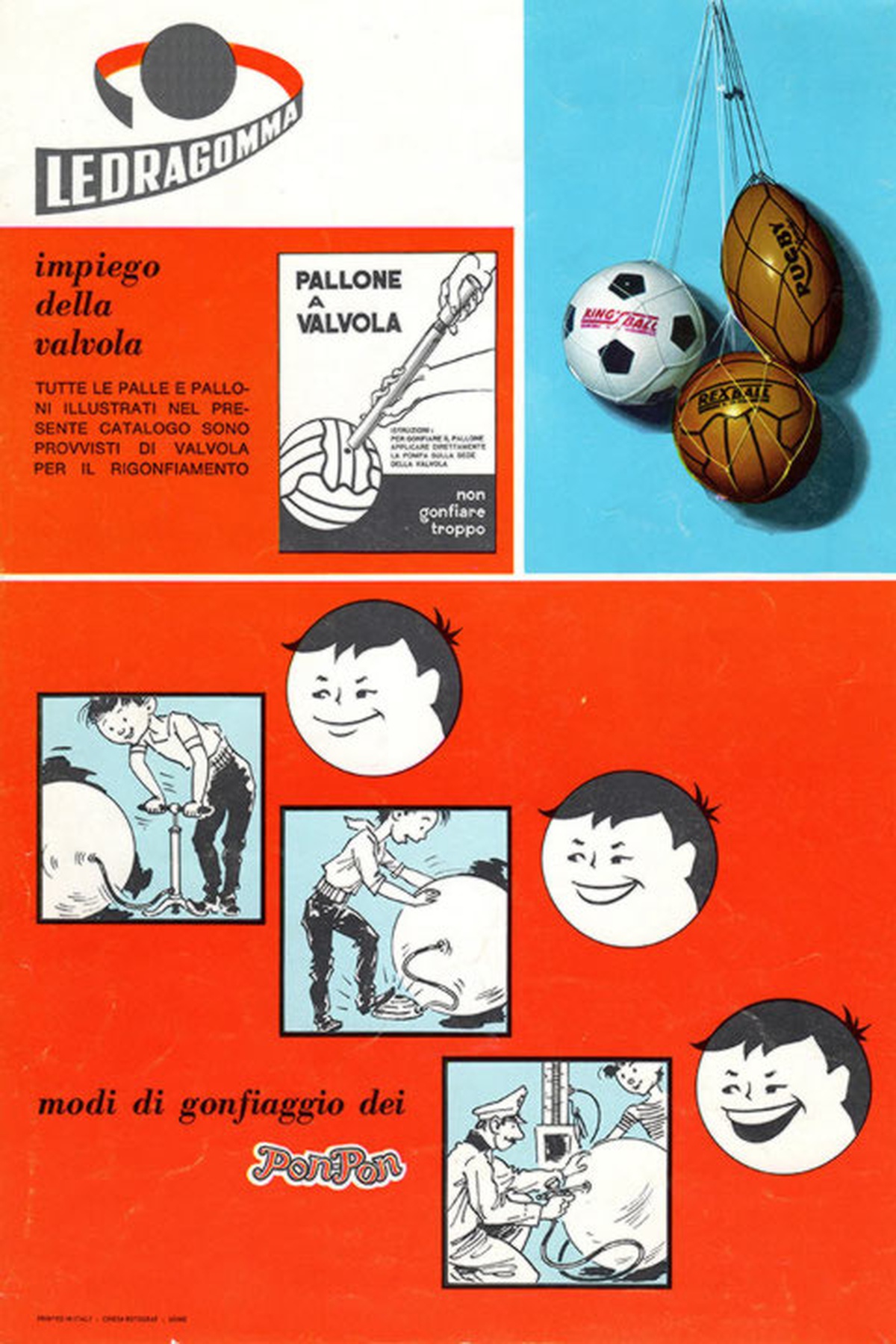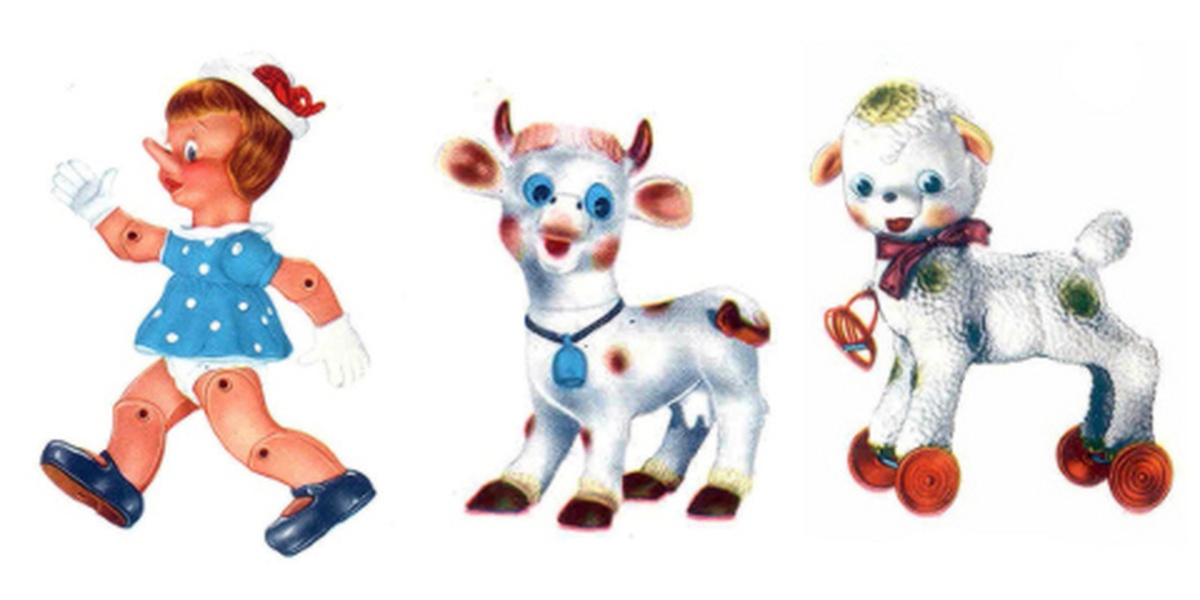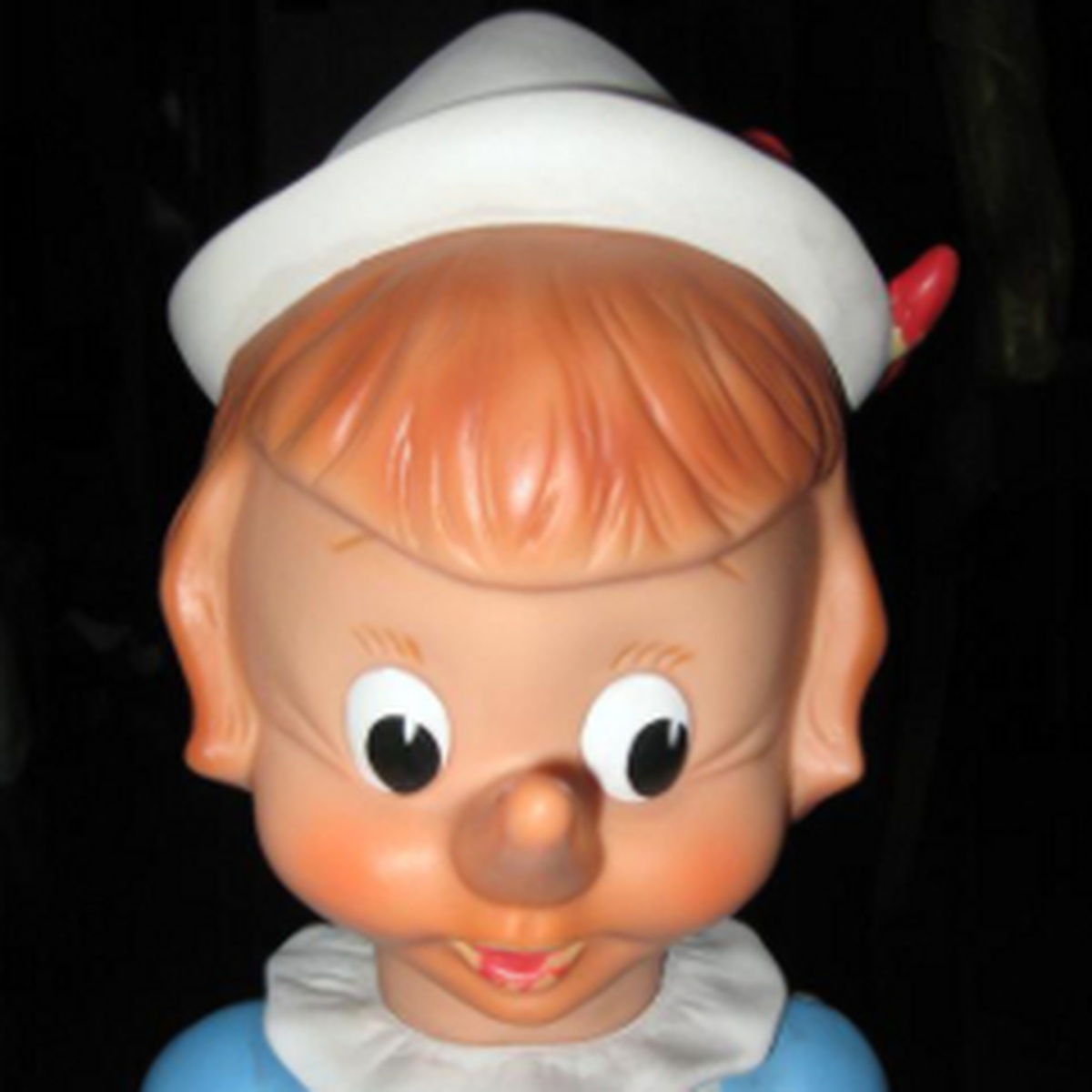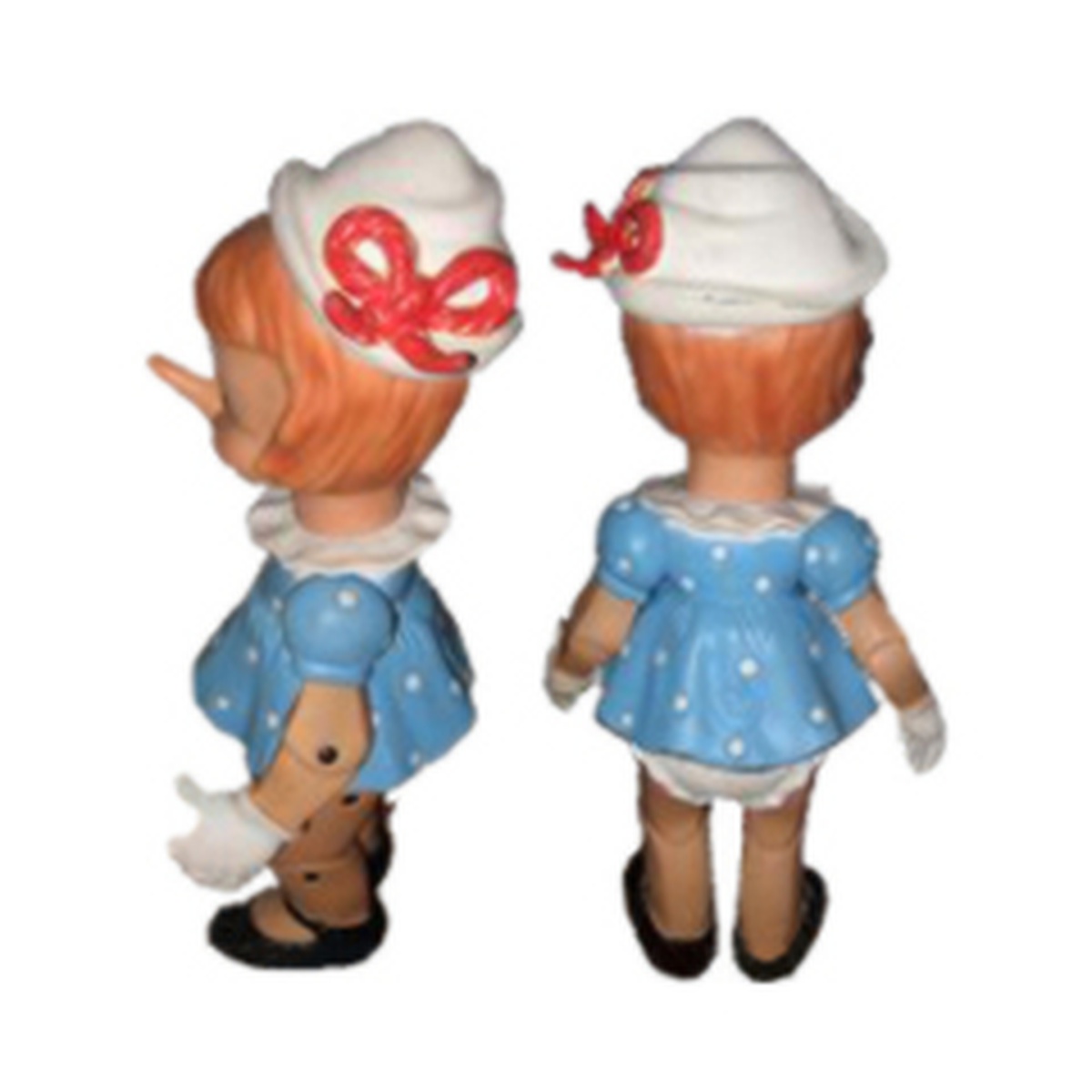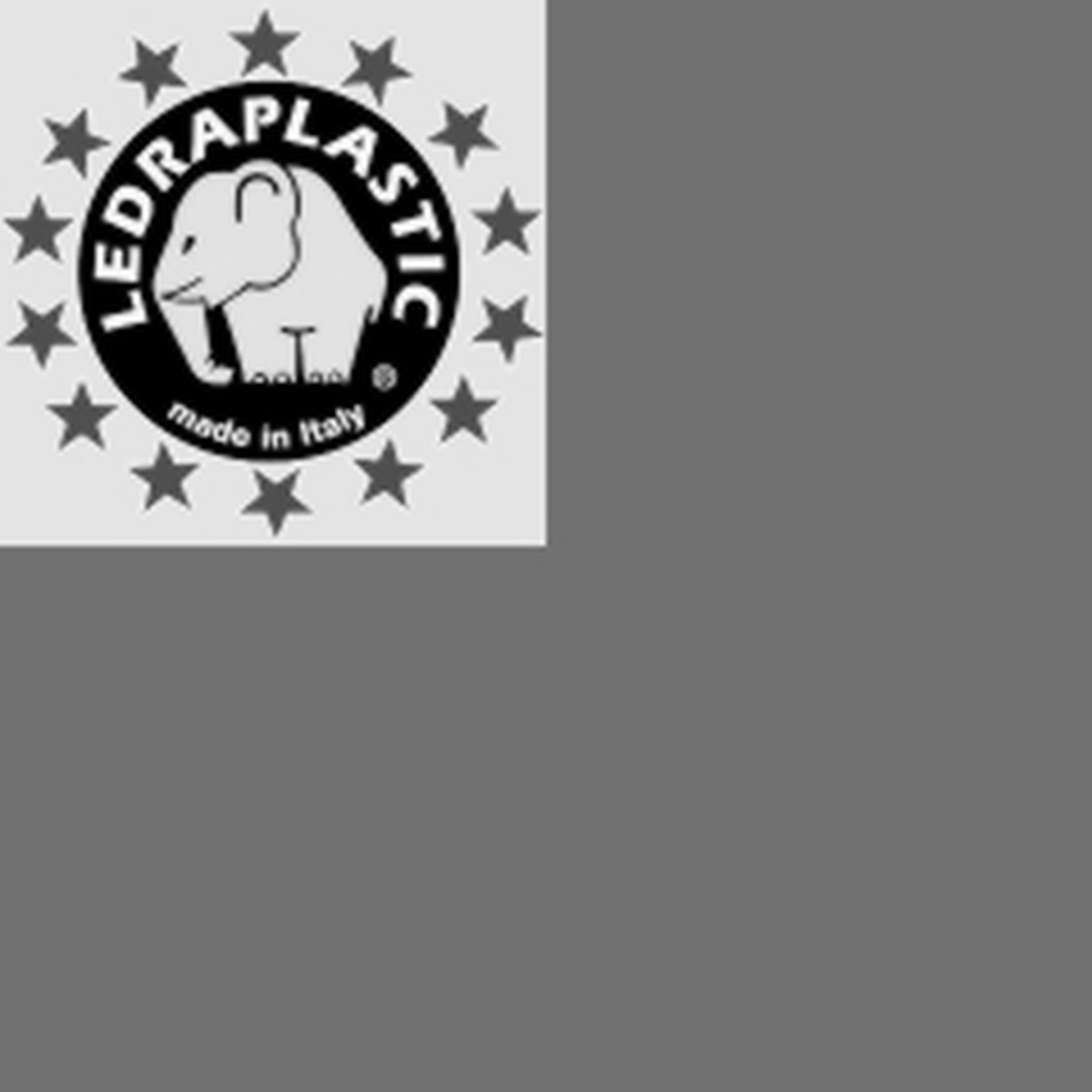Museo del Design del Friuli Venezia Giulia – Associazione di Promozione Sociale
P. IVA e CF 02863400301 – info@mudefri.it
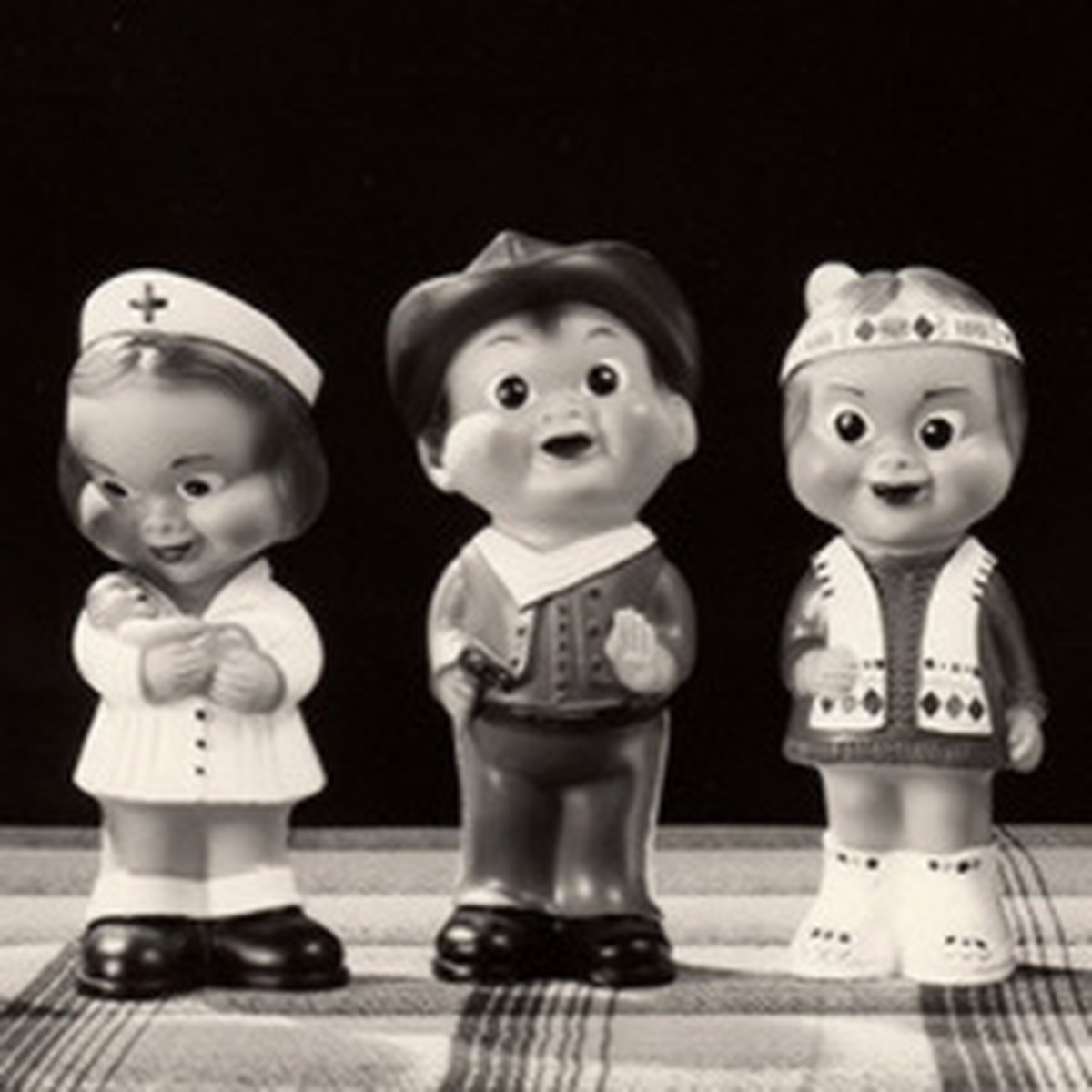
In the sixties, the story of Walt Disney’s dwarfs, by then famous the world over, was to intersect with that of Ledragomma and its sister company, Ledraplastic. With the wider availability of PVC, which permitted far greater accuracy than rubber, new possibilities opened up in the toy industry. The two Friulian brands developed plastic rotational molding, which dispensed with the need to prepare two separate parts and then fuse them together at a later stage, instead allowing hollow objects to be created in one single step. In the early years, production focused on objects depicting a variety of subjects, including a wide range of animals and dolls, as well as articles on wheels. The final products were of above average quality and it is this that in 1962 prompted Walt Disney Productions to grant Ledragomma the license to produce some of its characters, including Snow White and the Seven Dwarfs. The company rose to the important challenge and succeeded in producing three-dimensional versions which eloquently conveyed the varied expressions and demeanors of the characters depicted in the cartoon animations. Since 1980, Ledragomma and Ledraplastic have operated as two distinct brands but both continue to produce plastic objects.
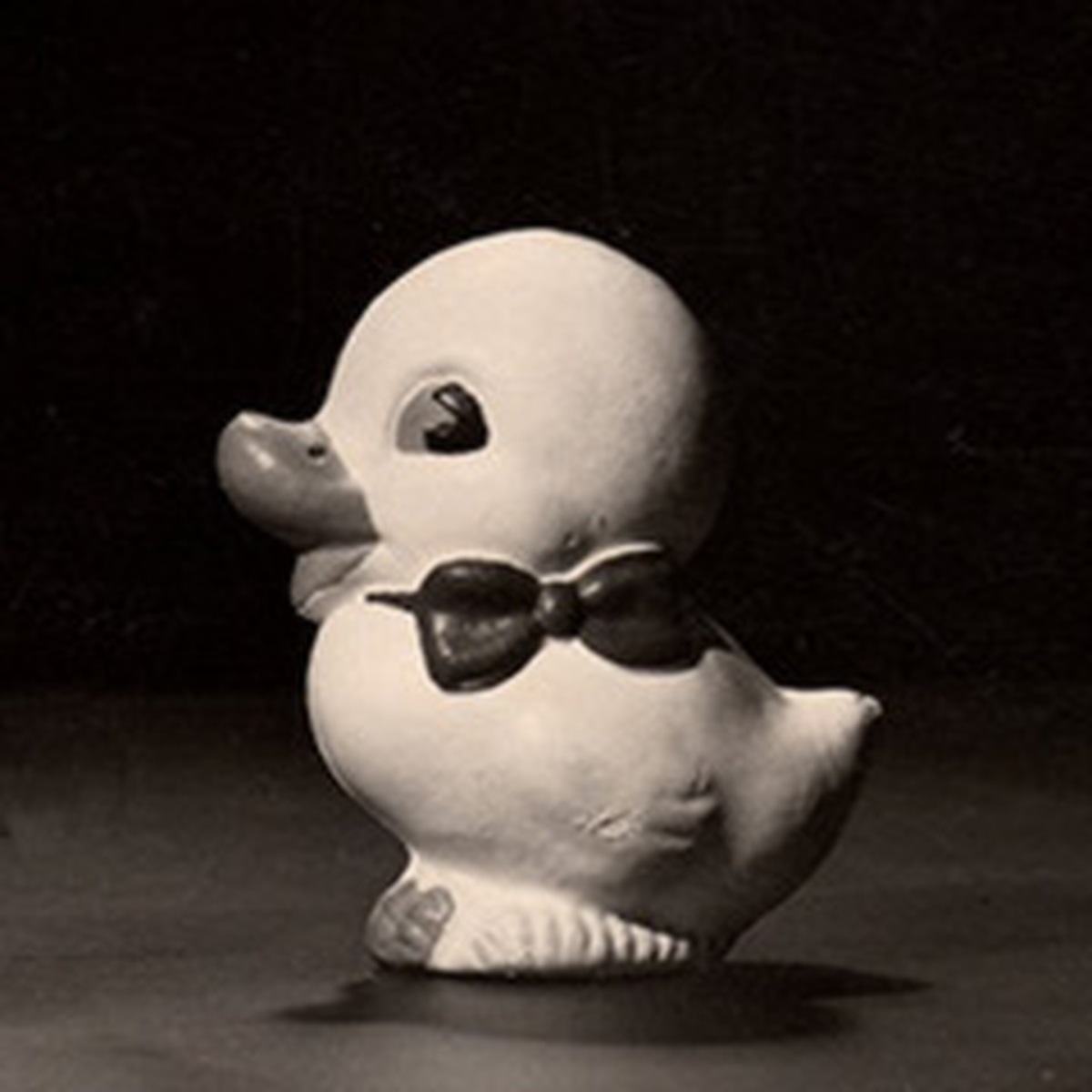
Ledraplastic products of the 50s and 60s (courtesy Ledragomma)
One of the first rubber products (courtesy Ledragomma)
